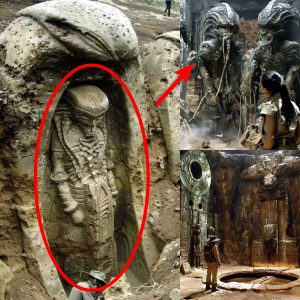The image of dinosaurs wandering the sandy landscapes of ancient Egypt, with the iconic pyramids in the background, might seem like a scene straight out of a science fiction novel. However, recent discoveries of dinosaur fossils in Egypt have sparked curiosity and excitement, prompting scientists and history enthusiasts alike to delve deeper into Earth’s distant past. Could it be true that these prehistoric giants once roamed the land of the pharaohs?
Unearthing the Past
The notion of dinosaurs existing alongside ancient Egyptian civilization is an enthralling one, albeit scientifically impossible since dinosaurs went extinct around 65 million years ago, long before humans appeared. Nonetheless, the discovery of dinosaur fossils in Egypt provides significant insights into the prehistoric era, revealing a fascinating chapter of Earth’s history.
Discoveries in the Desert
In recent years, paleontologists have uncovered remarkable dinosaur fossils in the Egyptian desert. These findings include well-preserved bones that paint a vivid picture of the types of dinosaurs that once inhabited this region. Among the most notable discoveries is the Paralititan stromeri, one of the largest dinosaurs ever found. This massive herbivore, estimated to be around 100 feet long, roamed the ancient river deltas that existed in what is now the Sahara Desert.
Another significant discovery is the Spinosaurus aegyptiacus, a formidable predator with distinctive sail-like structures on its back. This carnivorous dinosaur, which lived around 95 million years ago, adds to the diverse array of prehistoric life that once thrived in the area.
Egypt’s Prehistoric Landscape
During the time when dinosaurs roamed the Earth, the landscape of what we now know as Egypt was vastly different. The region was characterized by lush river systems, dense vegetation, and abundant wildlife. These ecosystems provided a suitable habitat for various dinosaur species, allowing them to flourish.
The discovery of dinosaur bones in Egypt not only sheds light on the types of creatures that inhabited the region but also offers clues about the climatic and environmental conditions of the time. By studying these fossils, scientists can reconstruct ancient ecosystems and better understand how dinosaurs adapted to their surroundings.
The Importance of These Finds
The significance of these discoveries extends beyond mere fascination. Dinosaur fossils found in Egypt contribute valuable data to the global understanding of dinosaur evolution and migration patterns. They help fill gaps in the fossil record, providing a more comprehensive picture of prehistoric life on Earth.
Moreover, these finds highlight the importance of paleontological research in uncovering Earth’s ancient history. Each fossil unearthed is a piece of a larger puzzle, offering insights into the planet’s biological and geological past.
Conclusion: A Glimpse into Earth’s Ancient History
While the idea of dinosaurs roaming the land of the pyramids may be an imaginative leap, the discovery of their fossils in Egypt is a testament to the rich and diverse history of our planet. These ancient bones offer a window into a world long gone, reminding us of the incredible creatures that once dominated the Earth.
As paleontologists continue to explore the deserts of Egypt, who knows what other secrets of the prehistoric world will be unearthed? One thing is certain: the sands of time hold many more stories waiting to be discovered.





